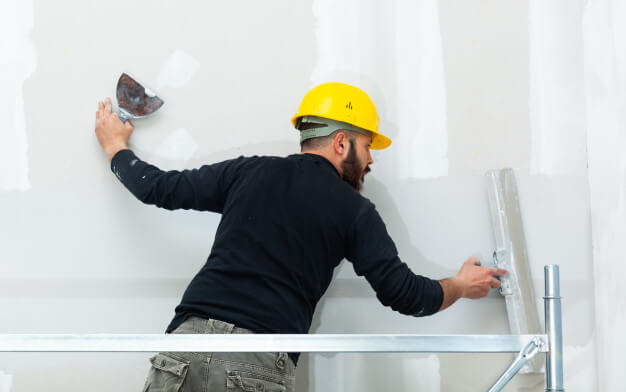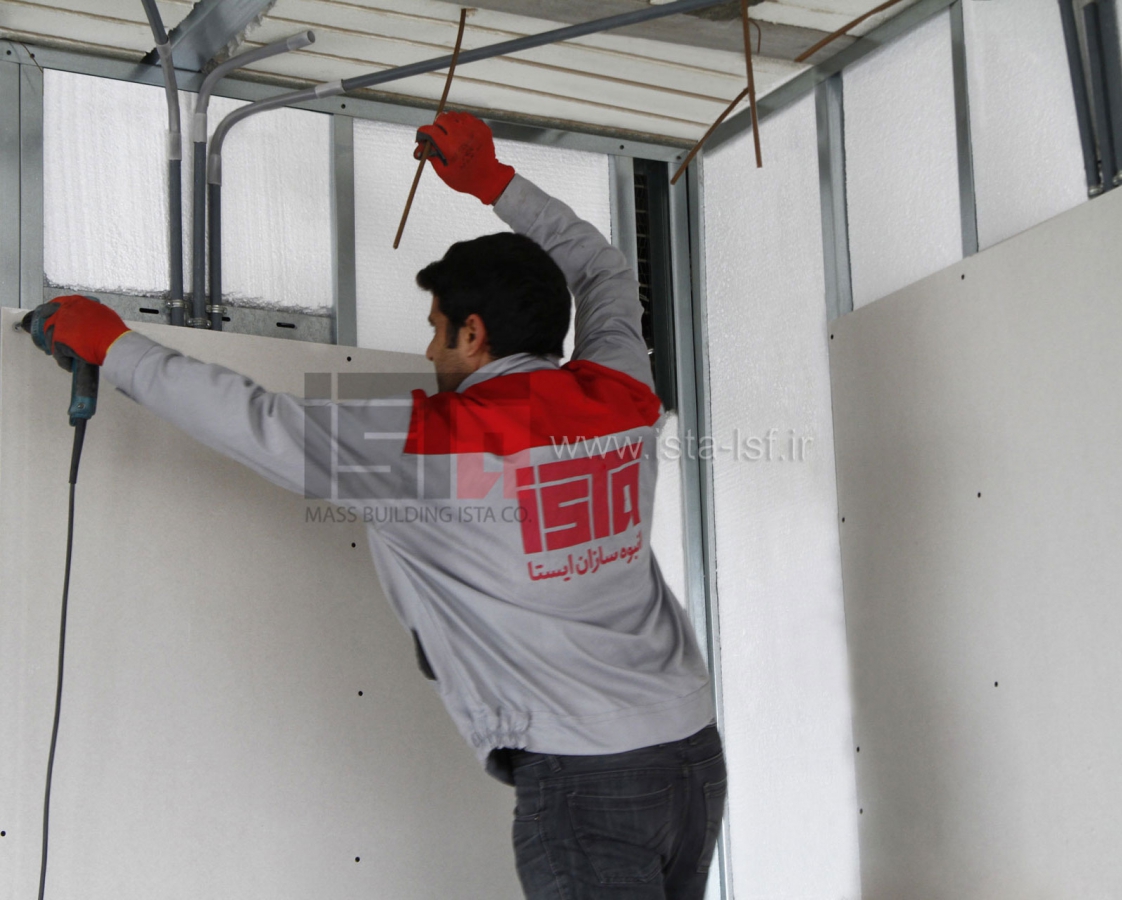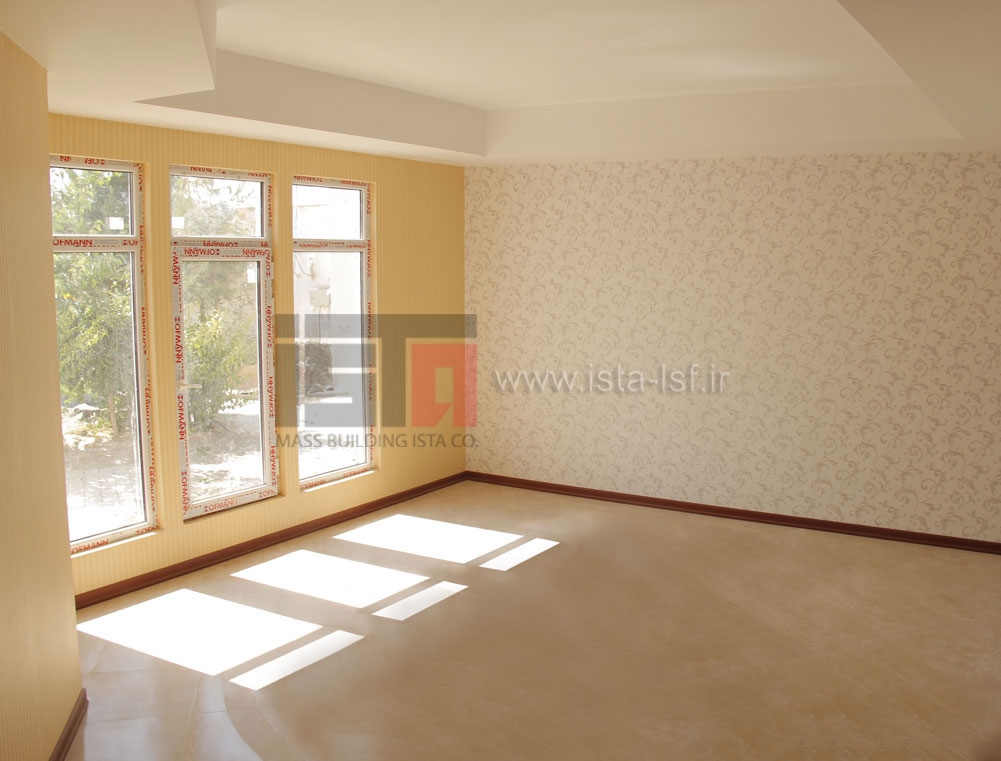Dry Walls
Dry wall consists of a metal or wooden middle core and plaster or cement sheets on the sides. In the empty space between two layers, you can use all kinds of heat and sound insulation for heat and sound insulation.
Gypsum sheet or leaf plaster consists of two thick layers of paper on the sides and a plaster sheet that can have different thicknesses. There are also types of leaf plaster for use in different environments, such as ordinary leaf plaster, anti-moisture leaf plaster, fire-resistant leaf plaster, according to the type of environment, suitable leaf plaster or a combination of several layers of leaf plaster is used. .
Cement sheets are also produced under the name of fiber cement board with different physical characteristics and thicknesses, which can be used according to the desired environment.
Advantages of Dry Walls:
- High Implementation speed
- Integrated wall behavior and greater strength during earthquakes
- 35% reduction in the dead load of the building and reducing the effective force of the earthquake on the building
- Acoustic and thermal insulation
- And much more…
Due to the increasing use of drywall in all types of urban buildings, the executive unit has initiated the formation of expert groups in the field of drywall implementation. Until now, in addition to the implementation of many dry wall projects, Ista Company has also worked as a contractor for other wall support components (Wallpost) in some projects.
Also, this company is the largest producer of dry wall supplies in the east of the country.



